Essential screening tests every woman should know
The article is professionally consulted by Master, Doctor Dinh Thanh Ha - Obstetrician and Gynecologist - Department of Obstetrics and Gynecology, Vinmec Nha Trang International Hospital
Screening tests can indicate health problems, even before a person has symptoms. One thing to keep in mind is that screening should be done according to age, family history, personal history, and other risk factors.
1. Breast Cancer
The earlier breast cancer is detected, the better the chance for a patient to be cured because tumors detected at a young age are unlikely to spread through the lymph nodes, vital organs such as the lungs and brain. Women in their 20s to 30s are recommended by experts to have a breast exam as part of their one- to three-year routine check-up program. For women with additional risk factors, your doctor will recommend more frequent screening tests.
Breast cancer screening by mammography
Mammogram is a low-dose X-ray technique that can find breast lumps before the patient feels the existence of a tumor, although Although a normal result does not completely rule out the risk of cancer. Some experts recommend that women in their 40s have a mammogram every year, then every other year, between the ages of 50 and 70. For high-risk patients, your doctor will recommend recommends screening at a higher frequency.
Breast cancer screening by mammography
Mammogram is a low-dose X-ray technique that can find breast lumps before the patient feels the existence of a tumor, although Although a normal result does not completely rule out the risk of cancer. Some experts recommend that women in their 40s have a mammogram every year, then every other year, between the ages of 50 and 70. For high-risk patients, your doctor will recommend recommends screening at a higher frequency.

Sàng lọc ung thư vú bằng phương pháp chụp nhũ ảnh giúp sớm phát hiện sự tồn tại của khối u
2. Cervical cancer
Cervical cancer is not at all difficult to prevent. The cervix is a narrow tube that connects the uterus (where the baby is nourished) and the vagina (the birth canal). To screen for cervical cancer, your doctor will combine a Pap smear and an HPV test (Human Papillomavirus). The Pap smear looks for abnormal cells on the cervix, which can be removed before they become malignant.
However, a series of subsequent studies showed that with the traditional PAP method, more than 80% of the cells were removed after smearing on the slide, thus increasing the rate of missed abnormal cells. .
In order to improve diagnosis quality and update new techniques, since January 2013, Vinmec Hospital officially introduced the ThinPrep Pap Test for early detection of cervical cancer to serve diagnosis and treatment. cervical cancer (CTC). The main cause of cervical cancer is the HPV virus, which is usually sexually transmitted.

Phát hiện sớm ung thư cổ tử cung qua xét nghiệm ThinPrep Pap Test
Vaccines for cervical cancer
The HPV vaccine can protect girls under age 26 against many strains of HPV. However, the vaccine cannot protect you against all cancer-causing strains of HPV, and not all cases of cervical cancer are caused by HPV, so cervical cancer screening is essential. is still very much needed.
3. Osteoporosis and Fracture
Osteoporosis is a condition in which bones are weak and break easily. After menopause, women begin to lose more bone mass, but not only women, men also develop osteoporosis. The first symptom is usually the pain of even a slight fall, hit, or sudden twist. In the United States, over the age of 50, about half of women and a quarter of men have broken bones as a result of the disease. Fortunately, osteoporosis can be prevented and treated.
Screening test for osteoporosis
A special X-ray technique called DXA (dual energy X-ray absorptiometry) can check bone health and detect osteoporosis Before a person breaks a bone, it also helps predict future fracture risk. All women over 65 years of age are recommended to have DXA. If a woman already has risk factors for osteoporosis, her doctor will recommend testing sooner.
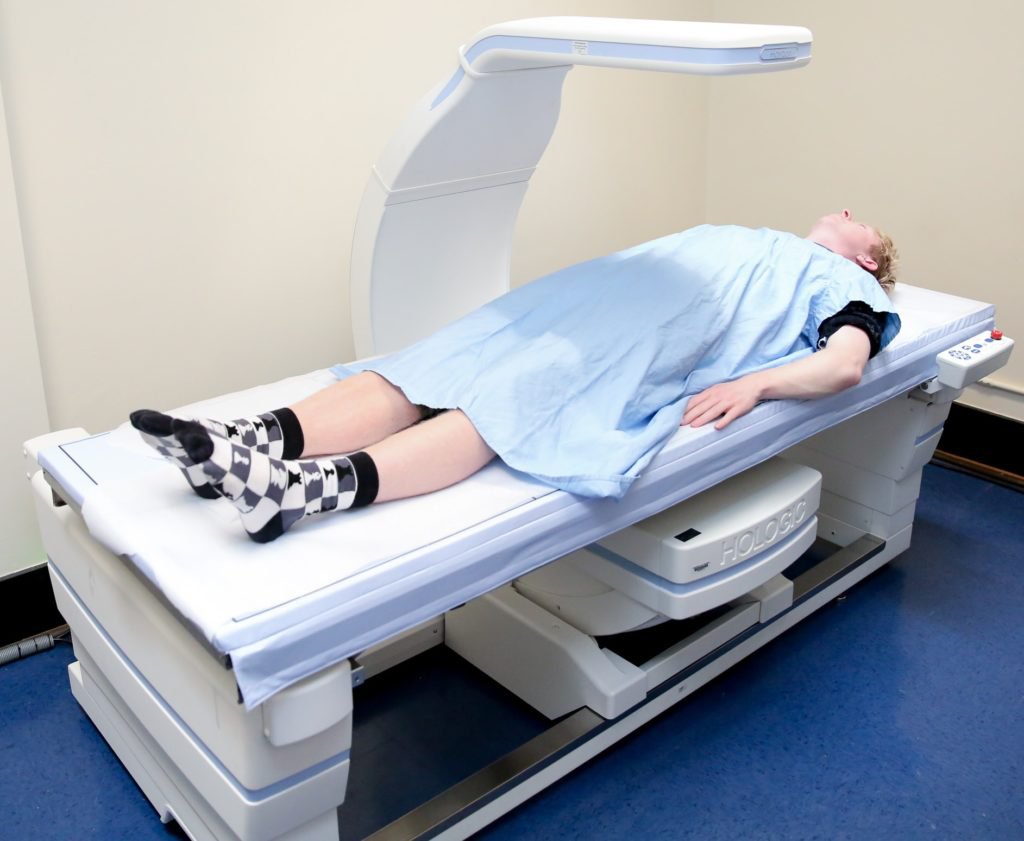
Xét nghiệm sàng lọc loãng xương (DXA) là một kỹ thuật X-quang đặc biệt giúp dự đoán nguy cơ gãy xương trong tương lai
4. Skin cancer
There are many types of skin cancer and early treatment for all skin cancers is effective. The deadliest type of skin cancer is melanoma, which occurs in the cells that make the skin pigment. Some people have genetic risk factors for this type of cancer, and the risk increases with overexposure to the sun. Basal cell and squamous cell cancers are also two common forms of non-melanoma.
Skin cancer screening
Be aware of any skin changes, including moles and freckles, and check for changes in their shape, size and color. Patients are advised to check their skin with a dermatologist during a routine physical exam.
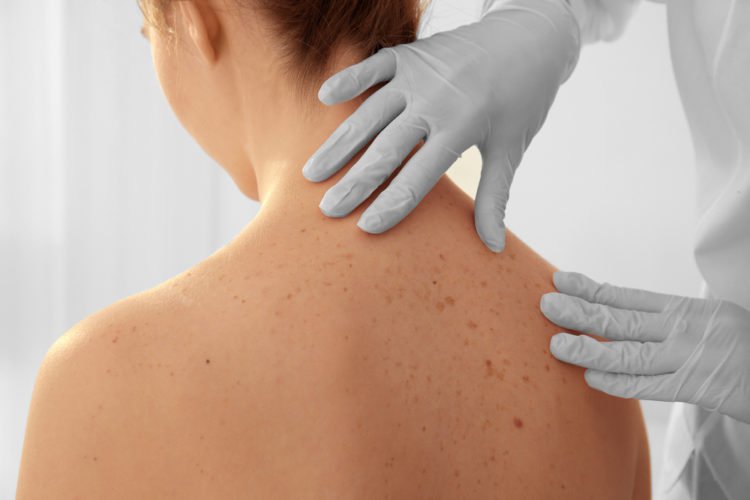
Tầm soát ung thư da nên được thực hiện khi khám sức khỏe tổng quát định kỳ
5. High blood pressure
As age increases, the risk of high blood pressure in women also increases, especially for those who are overweight or have unhealthy lifestyle habits. High blood pressure can cause life-threatening problems like heart attack or stroke without any warning. Therefore, regular check-ups with your doctor to control blood pressure are vital. Lowering blood pressure levels also prevents long-term risks such as heart disease and kidney failure.
Screening for high blood pressure
Blood pressure includes two numbers: Systolic blood pressure is the pressure of blood on the arteries when the heart beats to pump blood, diastolic pressure is the pressure of blood in the arteries when the heart is resting between two blood pressure. Beat. Normal blood pressure index according to the classification of the European Society of Cardiology and Blood Pressure (ESC/ESH) in 2018:
Normal blood pressure is defined as:
Systolic blood pressure between 90 mmHg and 129 mmHg. Diastolic blood pressure between 60 mmHg and 84 mmHg.
Screening for high blood pressure
Blood pressure includes two numbers: Systolic blood pressure is the pressure of blood on the arteries when the heart beats to pump blood, diastolic pressure is the pressure of blood in the arteries when the heart is resting between two blood pressure. Beat. Normal blood pressure index according to the classification of the European Society of Cardiology and Blood Pressure (ESC/ESH) in 2018:
Normal blood pressure is defined as:
Systolic blood pressure between 90 mmHg and 129 mmHg. Diastolic blood pressure between 60 mmHg and 84 mmHg.

Huyết áp tâm thu là áp lực của máu lên động mạch khi tim co bóp
Classification of hypertension according to the European Society of Cardiology and Blood Pressure (ESC/ESH) 2018:
Optimal blood pressure: systolic blood pressure < 120 mmHg and diastolic blood pressure < 80 mmHg. Normal blood pressure: Systolic blood pressure 120-129 mmHg and/or diastolic blood pressure 80-84 mmHg. High-normal blood pressure: Systolic blood pressure 130-139 mmHg and/or diastolic pressure 85-89 mmHg. Grade 1 hypertension: Systolic blood pressure 140-159 mmHg and/or diastolic blood pressure 90-99 mmHg. Grade 2 hypertension: systolic blood pressure 160-179 mmHg and/or diastolic blood pressure 100-109 mmHg. Grade 3 hypertension: systolic blood pressure ≥ 180 mmHg and/or diastolic blood pressure ≥ 110 mmHg. Isolated systolic hypertension: Systolic blood pressure ≥ 140 mmHg and diastolic blood pressure < 90 mmHg. Blood pressure, whether high or low, affects the functioning of organs in the body. Knowing the normal blood pressure readings and the factors that cause changes in blood pressure for self-prevention is very important, patients should consult a specialist to understand the method and frequency. Monitor blood pressure as well as risk markers.
6. Blood fat (Cholesterol)
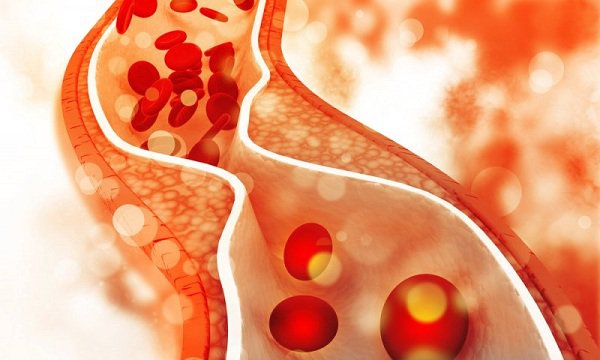
Lượng mỡ máu cao gây tình trạng tắc nghẽn động mạch máu dẫn đến nguy cơ nhồi máu cơ tim hoặc đột quỵ
High levels of fat in the blood create plaque that clogs the arteries, the dangerous thing is that plaque quietly builds up for years without symptoms, eventually leading to a heart attack or stroke. High blood pressure, diabetes and smoking are also causes for plaque to develop. That condition is called hardening of the arteries or atherosclerosis. Lifestyle changes and medical treatment can reduce a woman's risk.
Check blood fat
Patients are advised to fast for 12 hours before the test, not to eat or drink soft drinks, fruit juices, carbonated drinks, especially alcohol, beer, coffee coffee... Substances in food can be converted into glucose, making test results inaccurate, especially tests related to heart disease and blood fat. Blood fat test includes: total cholesterol, bad cholesterol LDL, good cholesterol HDL and Triglyceride. The time to start routine check-ups and the frequency of check-ups will be announced by the doctor depending on the health status of each patient.
Check blood fat
Patients are advised to fast for 12 hours before the test, not to eat or drink soft drinks, fruit juices, carbonated drinks, especially alcohol, beer, coffee coffee... Substances in food can be converted into glucose, making test results inaccurate, especially tests related to heart disease and blood fat. Blood fat test includes: total cholesterol, bad cholesterol LDL, good cholesterol HDL and Triglyceride. The time to start routine check-ups and the frequency of check-ups will be announced by the doctor depending on the health status of each patient.
7. Type 2 diabetes
One-third of Americans with diabetes don't even know they're a victim of the disease. Diabetes can cause heart or kidney disease, stroke, and blindness by complicating the retina's blood vessels, damaging them, and leading to other serious problems. Patients can control diabetes with diet, exercise, weight loss and medical treatment, especially when diabetes is detected early.
Diabetes screening
Before taking a blood test to screen for diabetes, the patient needs to fast for 8 hours before. Diabetes testing includes current blood sugar (Glucose) and average blood sugar for the previous 3 months (HbA1c), glycemic tolerance test. For people in risk groups such as having a family history of diabetes, obesity, etc., the doctor will appoint an early examination and screening test with a higher frequency.
Diabetes screening
Before taking a blood test to screen for diabetes, the patient needs to fast for 8 hours before. Diabetes testing includes current blood sugar (Glucose) and average blood sugar for the previous 3 months (HbA1c), glycemic tolerance test. For people in risk groups such as having a family history of diabetes, obesity, etc., the doctor will appoint an early examination and screening test with a higher frequency.
8. Human Immunodeficiency Virus (HIV)
HIV is the virus that causes acquired immunodeficiency syndrome (AIDS), which is spread through blood and secretions from an infected person, such as: unprotected sex, sharing contaminated needles, pregnant women HIV-infected pregnant women can pass it on to their babies. There is currently no treatment or vaccine for the virus, but early treatment with antiretroviral drugs can help the immune system fight the virus.
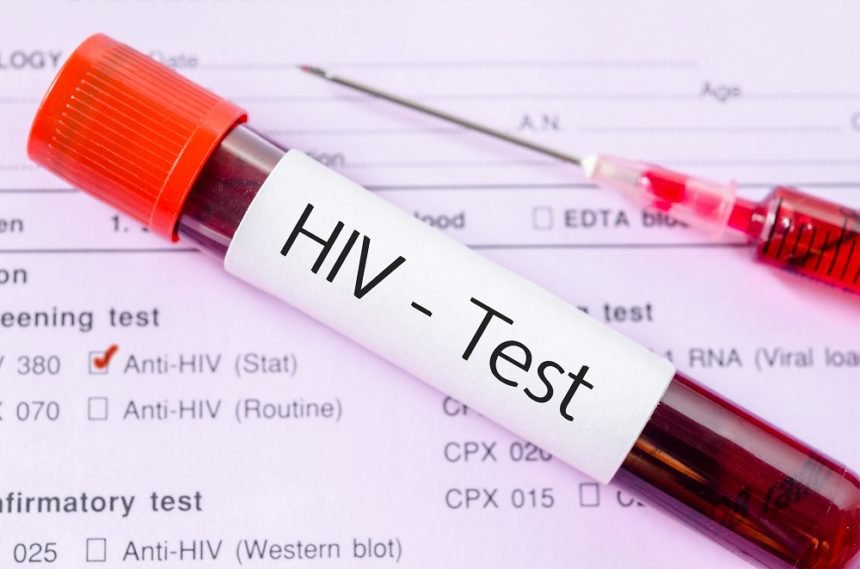
Xét nghiệm HIV để phát hiện sớm và tránh lây lan
HIV test HIV may not cause any symptoms for many years, the only way to detect HIV is to do a blood test. The US Preventive Medicines Agency recommends screening for adolescents and adults aged 15 to 65 years. Young adolescents and older adults at high risk should also be screened.
Preventing HIV Infection Most people who are newly infected will test positive for HIV about two months after being exposed to the virus. But in rare cases, it can take up to six months for HIV antibodies to develop. Condoms should be used during sex to avoid contracting HIV or other sexually transmitted infections.
9. Colorectal Cancer

Tầm soát ung thư đại trực tràng bằng phương pháp nội soi
Colorectal cancer is the second most common cause of cancer death after lung cancer. Most colon cancers develop from polyps, which are growths on the lining of the large intestine. Polyps may or may not be malignant, but if they are cancerous, they will spread to other parts of the body. Removing polyps early before they develop into cancer can prevent total risk.
Colorectal Cancer Screening
Colonoscopy is a common method of colorectal cancer screening, usually done after the patient's anesthesia. When the patient is asleep, the endoscopist will insert a small flexible tube with a video camera into the colon, when polyps are found, the doctor can perform surgery to remove them.
10. Glaucoma (glaucoma)
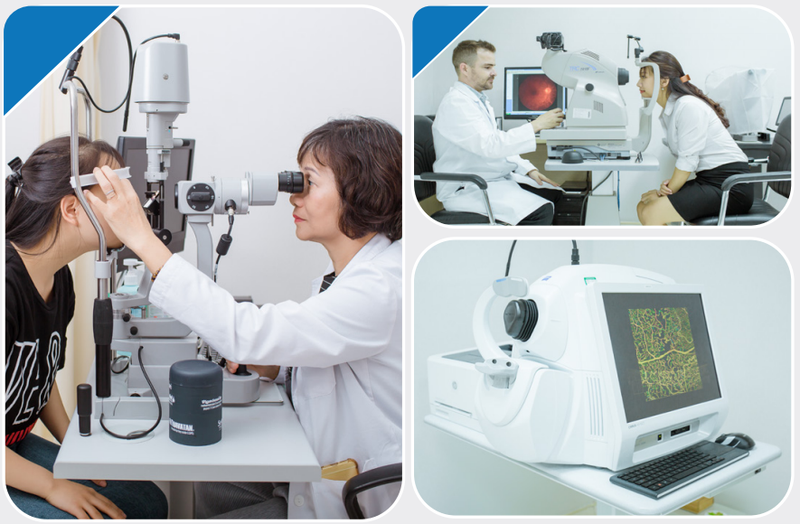
Khám mắt định kỳ để phòng tránh và điều trị sớm một số bệnh về mắt
Glaucoma (also known as glaucoma) is an eye disease caused by elevated intraocular pressure compressing the optic nerve, damaging the optic nerve, leading to gradual loss of vision. can destroy the optic nerve and cause blindness. Often the patient has no symptoms until the market is affected.
Glaucoma Screening
Frequency of check-ups with an Ophthalmologist depends on age and risk factors, such as African-American or Hispanic, over 60 years of age, history of eye trauma, steroid use and a family history of glaucoma.
11. Consult your doctor about screening tests
Some tests such as cervical or breast cancer screening should be done regularly. Other tests need to be based on the risk factors the patient has. Proper screening tests don't always prevent disease, but they help find it early enough to give people the best chance of getting treatment.
Để đặt lịch khám tại viện, Quý khách vui lòng bấm số HOTLINE hoặc đặt lịch trực tiếp TẠI ĐÂY. Tải và đặt lịch khám tự động trên ứng dụng MyVinmec để quản lý, theo dõi lịch và đặt hẹn mọi lúc mọi nơi ngay trên ứng dụng.
Article referenced source: Webmd.com
Bài viết này được viết cho người đọc tại Sài Gòn, Hà Nội, Hồ Chí Minh, Phú Quốc, Nha Trang, Hạ Long, Hải Phòng, Đà Nẵng.






